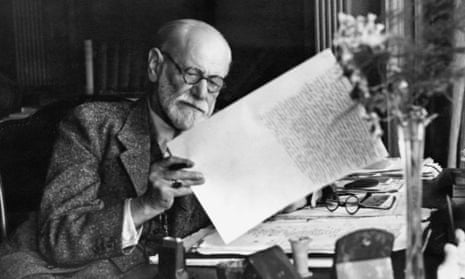The unconscious has had a bumpy ride since Sigmund Freud first described the extent of his discoveries in a seminal paper published 100 years ago this month. Sceptics sneer at its mention, assuming it’s as discreditable as penis envy. Others, who sense the father of psychoanalysis was on to something, prefer to hedge their bets and not be tarnished by Freud’s mixed reputation: they refer limply to the subliminal or subconscious. Yet it could be the case that far from being past its sell-by date, the time of the unconscious is yet to come.
The reasons are twofold: science and necessity. First, neuroscience has demonstrated conclusively that there’s far more going on in the mind than the owners of those minds are generally aware. Mark Solms, a professor of neuropsychology and psychoanalyst who has pioneered much of the effort to test Freud’s findings against the neuroscientific, often points out that the conscious mind is capable of attending to six or seven things at once, while the rest of the nervous system is performing thousands. In that light, it seems perverse to deny that much of psychic life lies over the horizon of our awareness, doubly so when you consider experiences such as dreaming and slips of the tongue, or ordeals from infancy that can’t be remembered and yet demonstrably shape adult life.
So the real debate, today, is whether the mechanisms that Freud ascribed to the unconscious – the so-called dynamic unconscious – were right. Take repression, the purposeful forgetting of memories that subsequently return as neurotic or psychotic symptoms. Freud argued this happens because an experience or thought is unpalatable or overwhelming, whereas cognitive psychology tends to resist such a notion. It prefers a static conception of unconscious contents. Memories can be lost, for sure, and linked to unexplained symptoms. But those symptoms cannot be read in meaningful or symbolic ways as Freud and his followers have contrived in the “talking cure”.
The science, though, is building to challenge this view. One line of research examines certain amnesic conditions in which patients fabricate memories and deny they can’t recall what actually happened. Such confabulations have been shown to follow the rules that Freud identified in a dynamic unconscious. They carry meaning. Alternatively, there are those who suffer from paraphasia, a syndrome in which forgotten words are substituted by others. The substitutions similarly show patterns that mirror those Freud detected in dreams and slips. The evidence is that repression is a key characteristic of the unconscious.
The second reason that the unconscious is worth exploring has to do with medical necessity. Take the phenomenon of medically unexplained symptoms. These are widespread and everyday. In her recent book, It’s All in Your Head, neurologist Suzanne O’Sullivan reports that up to a third of people who go to the doctor have them. Their distress is real; the patient is not making it up. And yet no biological cause can be found. When you consider how much this costs – one 2005 study for such psychosomatic disorders estimates an annual cost of over $250bn in the US alone – it’s clear that any reasonable candidate for explanation should be investigated with urgency.
The unconscious is one candidate, and conversion disorders provide a case in point. Also known as hysteria, these too are remarkably prevalent. All neurology clinics, for example, will have on their books many individuals with lives severely limited by seizures, but for whom an EEG reveals no epileptic activity in the brain. Other patients will be impaired by breathlessness, blindness, pain, paralysis. As O’Sullivan admits, even though there’s now technology to see inside the brain, the science is barely providing leads, let alone explanations.
But Freud’s central idea on conversion disorders – namely that a trauma, or perceived trauma, lies at the origin – is now routinely shown to have clinical efficacy. At a recent debate on this subject at the Freud Museum in London, Richard Kanaan, a neuropsychiatrist, and Stephanie Howlett, a psychotherapist, made the case. When you examine patient histories carefully – which of course takes time, training and money – the dissociations and meaning of the symptoms often emerge. They advise treating patients across disciplines: Howlett works in conjunction with psychologists, physiotherapists and neurologists. As Kanaan put it, if Freud had referred to PTSD (post-traumatic stress disorder) rather than hysteria, he would now be remembered as a pioneering hero.
No one is saying that the unconscious is a magic bullet. These are often complex conditions. Freud himself stressed that working with the unconscious is painstaking precisely because it is unconscious. Further, psychoanalysis has itself radically revised Freud’s original conclusions. But it now holds a century of wisdom on engaging this hidden and sometimes devastatingly powerful part of ourselves. Freud believed his work was only a beginning. Scientific research and sheer human need suggest we should energetically continue what he started.
